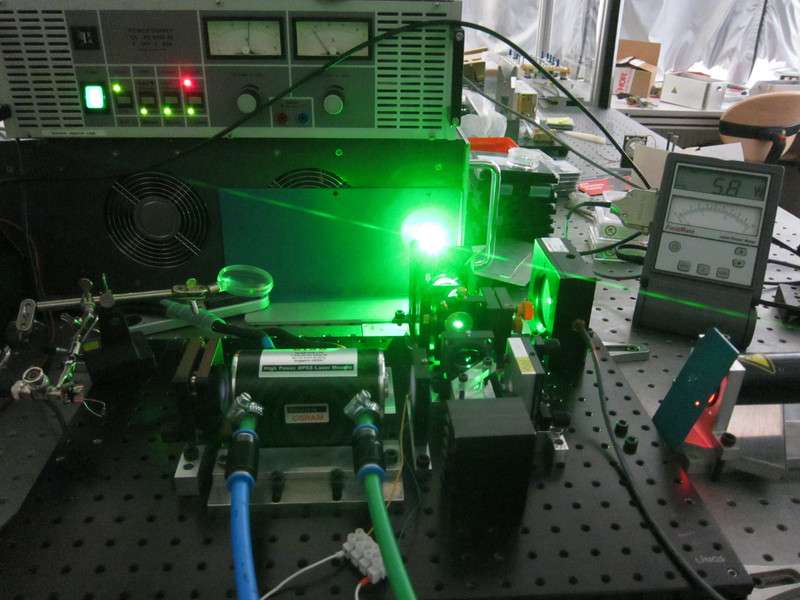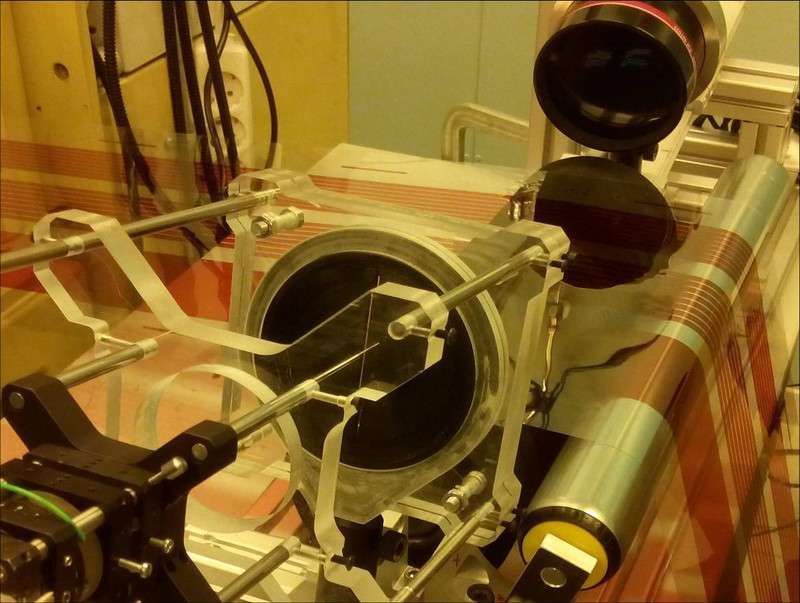A laser look at ultra-thin layers

From the coating of electronic or pharmaceutical products to thin plastic films – a new technique developed by TU Wien enables coating processes to be quality controlled in real time.
When covering large areas with very thin layers of exactly the right thickness in the micrometre or nanometre range, it is easy to make mistakes. In many cases, the thickness of the applied layer can only be measured once the coating process is complete. With a few technical tricks, however, a research team at TU Wien has now successfully developed a device which can be installed directly into coating systems and facilitates reliable quality control during operation. This device – the inline ellipsometer – is being presented to the public for the first time at the Hannover Messe trade fair.
Constantly under fire with laser pulses
"The basic principle is easy," explains Ferdinand Bammer from the Institute for Production Engineering and Laser Technology at TU Wien. "The surface is illuminated using a laser beam. We measure, how the laser light is changed by the thin layer is." It is not only the intensity of the laser beam which is significant, polarisation is also an important factor, i.e. the direction in which the light wave oscillates.

The device, which will now be presented, produces short laser pulses which are fired in quick succession. The light pulses are polarised differently using a crystal, which oscillates thousands of times per second. The polarisation and intensity of the pulses are changed to varying degrees, depending on the thickness of the layer which is being examined. This allows even extremely thin coatings with thicknesses in the micrometre or nanometre range to be analysed reliably. The coating may consist of any material, provided that it is at least partly transparent. In the case of extremely thin layers of a few nanometres, this even applies to metals.
As Ferdinand Bammer explains: "There are many advantages to our measurement technique. Our components are relatively inexpensive and we do not require any moving parts, which means that our device is cost-effective, robust and rarely prone to error." Measurement is contactless and can be carried out at a rate of approximately one hundred measurements per second. Using a special imaging method, an area of approximately thirty centimetres in length can be captured in a single measurement. This means that this technique can also be used for real-time quality control in high-speed industrial plants.
Competing products are either much more complex, significantly slower, or do not carry out extensive measurements of layer thicknesses, but rather take measurements at a few individual points. They also consume considerably more energy. In addition, while many systems fail on flexible, birefringent materials, the TU Wien method is able to handle many different materials.
From solar cells to special coatings for pharmaceuticals
"This is of particular interest for photovoltaics, for example. Solar cells are often made up of several layers, which must be of precisely the right thickness," explains Ferdinand Bammer. However, the technique has applications in virtually all areas of production, from fuel cells to battery and display technology, medicine and the pharmaceutical industry.
A prototype has already been built into existing systems and successfully tested for various types of coatings. The method for any coating processes can be specifically customised due to the versatile application of the ellipsometry technology. "We have proven that our technique works," explains Ferdinand Bammer. "And now we are able to offer it to a wide range of companies for the purpose of production or quality control."
Provided by Vienna University of Technology





















